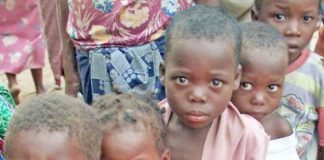A report by the UN agency coordinating the fight against HIV/AIDS, known as UNAIDS, entitled “Miles to go – closing gaps, breaking barriers, righting injustices”, has warned that the struggle against the scourge has reached a critical stage. The report says Eastern and Southern Africa remain the regions most affected by the HIV epidemic, accounting for 45 percent of the world’s HIV infections and 53 percent of people living with HIV globally.
UNAIDS said an estimated 800,000 people in Eastern and Southern Africa acquired HIV in 2017, and an estimated 380,000 people died of AIDS-related illnesses. Mozambique, South Africa and Tanzania accounted for more than half of the new HIV infections and deaths from AIDS-related illnesses in the region last year.
The report also indicates that HIV positive persons continued to be discriminated against in healthcare settings, especially towards key populations. The key populations include men who have sex with men, drugs users, transgender persons and sex workers, considered to be most at risk at contracting HIV.
It says an estimated 1 million sex workers need services in the two regions. In the view of the Director of UNAIDS and STI Control Program in Southern Africa, Dr. Kigen Barmasai, “we know that this contributes up to 33 percent of new infections in the regions, from the prevalence of 29 percent in female sex workers to 18 percent among the injected drug users. So as a program we are working on this and we are spearheading the HIV prevention, treatment and care efforts to reverse the epidemic. For the last ten years we have been working on that.”
More than half of the people who inject drugs surveyed in the report said they avoided health-care services, citing discrimination or fear of law enforcement authorities.


















